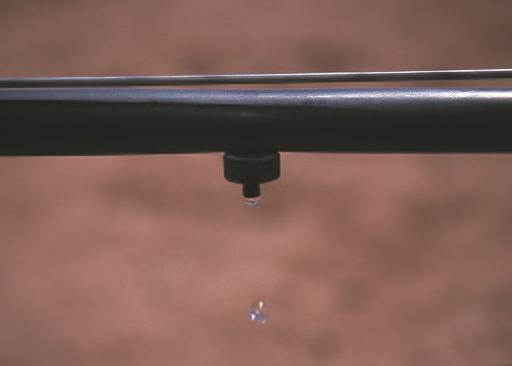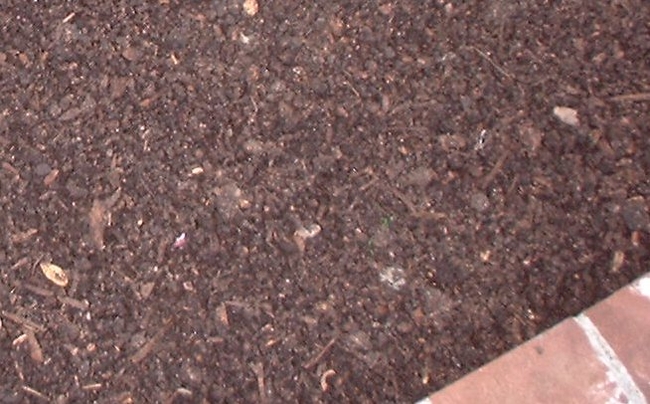This month we will look at when and how to water your roses. Especially now that the weather is starting to heat up and the rains are probably done until the fall. We live in a Mediterranean climate. Winter rain and summer dry.
I am always asked how much water does a rose need? Ah, the typical Master Gardener answer is, “It depends!” It depends upon the time of year and the type/size of the rose. The typical hybrid tea (we are talking a big, tall and mature plant) will take 6 to 9 gallons a week if the temps are below 80 F (as in spring and fall). A rose bush, such as a floribunda, about 3 feet wide and tall, will need about 3 gallons a week if the temperatures are below 80F and it hasn't rained in a long time. In wintertime, when the temps are much cooler, they will take much less water, especially if we have rain or the plant is dormant. During this and last year's winter, I didn't have to water at all because of the rain we had.
When the temps are over 90 F consistently, they will take about 12 gallons a week (not daily!). Again, this will depend on the size of the rose. Mini roses will take much less water than a full-size hybrid tea. Roses are pretty drought tolerant and can take less water, but they may show signs of stress. Roses in pots will probably require more water during summer.
How can you tell if your rose is stressed by not getting enough water? They will drop their leaves, decrease flower size or show early signs of dormancy.
The amount of water a rose needs will also depend upon the type of soil you have (get your soil tested!). If you have clay soil, it will hold water, so you will need less. If you have sandy soil, the water will permeate more quickly through the soil, so your roses may need more water. If you have nice loamy soil, the recommendations above will suffice.
So what is the best way to deliver water to your roses? It is important that you deliver water efficiently. That means making sure there is no overspray if you are using sprinklers. If you are hand watering, use a water wand that you can turn off at the nozzle. When you are done watering one rose, you can stop the water flow before moving on to the next.

OK, here is where we get into the math of a drip system. How do you estimate the number of emitters each rose plant needs? It is not that difficult. If you use one-gallon emitters, that means that they will deliver one gallon of water per hour. If you place four one-gallon emitters per plant (an emitter in the front and back and one on each side of the plant), that plant will get four gallons of water per hour. We can water 3 days a week until the end of summer. So, if you run your system for an hour each day we can water (either Sunday, Wednesday, Friday or Tuesday, Thursday, Saturday depending on your address), your plant will get 12 gallons of water per week (three days per week x four gallons of water each day, equals 12 gallons per week).
OK, so one more bit of math. It is better for your plant not to get a gallon of water all at once. You want the water to soak into the soil surrounding the plant. I divide that hour of watering into three sessions of 20 minutes each. I stagger those times and water around 5 a.m., 7 a.m. and again in the evening after 7 p.m. Doing this allows the water to reach the roots of the plant. It also encourages the roots to grow deeply rather than on the surface. That is much better for the health of your plant.
Now, if the temperatures are going to be consistently over 107 F for several days, I may water a fourth cycle. I would add another cycle in the morning but keep the one at night as close to 11 p.m. as possible, so my plant can have some water for the next day or two when we can't water.

Mulch will moderate the temperature of the soil and maintain moisture. It will also keep weeds away from your plant! I prefer to do less work in the garden during our hotter than Hades summers. This is a way to make that happen! Don't use rubber mulch. Don't use mulch that has been dyed. Use a mulch that will break down over time and enrich your soil. I like fine wood chips the best. I will often have 2 to 3 inches of fine wood chips over an inch or two of compost around the plant. That way, I am feeding the soil, which the plant appreciates.
Now there are two thoughts as to whether to let your roses go dormant or not during a hot summer. For us, that generally means from the middle of June until at least the middle to end of September when the temps are finally cooler. If you choose to let your roses go dormant:
- Don't feed your roses.
- Make sure your watering system is operating efficiently and continue to water as described above.
- Apply 4 inches of mulch over the entire bed.
- Don't prune your roses.
- You can deadhead them or just remove the spent petals and allow hips to form.
- If the leaves burn on your plant, leave them on the plant to help shade the canes from burning.
There is another school of thought from folks who grow roses in Tucson. Grow your roses under shade cloth, when the temps are consistently over 95 F. June is often the hottest month in Tucson. They use 65% shade cloth as a canopy over their roses. In essence, they create a canopy structure with pipes and shade cloth. It is big enough to cover the roses and still walk under them. Some put a misting system on the pipe as well to increase the humidity.
They continue to feed their roses and don't let them go dormant. I have seen wonderful results. Beautiful growth and flowers all summer long. They remove the shade cloth in the fall, winter and early spring. In Tucson, they are still able to water their roses daily (if necessary and if they don't have monsoon rains that day). We don't have that luxury, unfortunately.
So, I will be trying a modification on this method. I just installed a pergola on my patio that will provide some relief during the summer (about 40% or so), near my rose bed. I may add an additional solar screen between my pergola and roses, so they get more relief from the blazing sun during the hottest part of the day. I will let you know how my “experiment” works!
Until Next Time; “I feel as if I had opened a book and found roses of yesterday sweet and fragrant, between its leaves.” – L.M. Montgomery, Anne of the Island